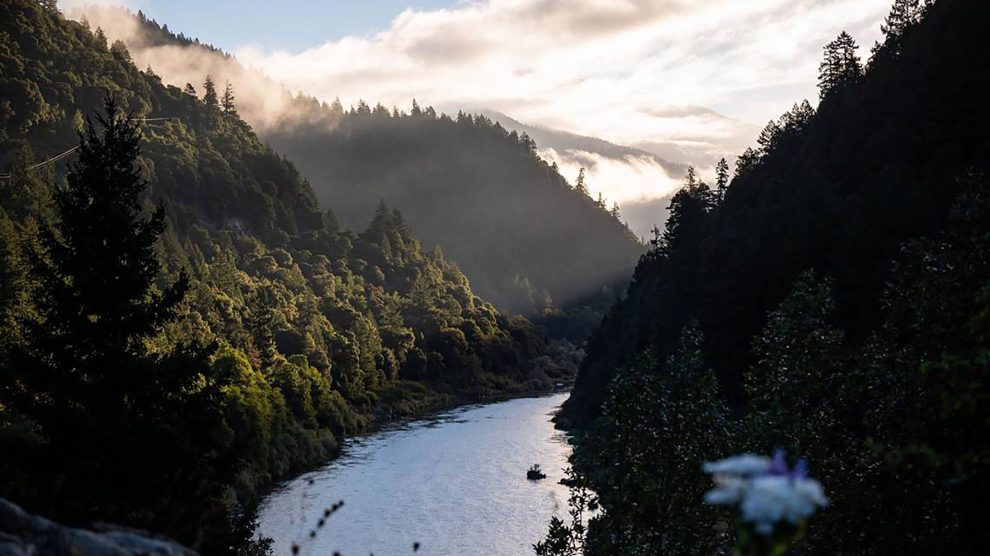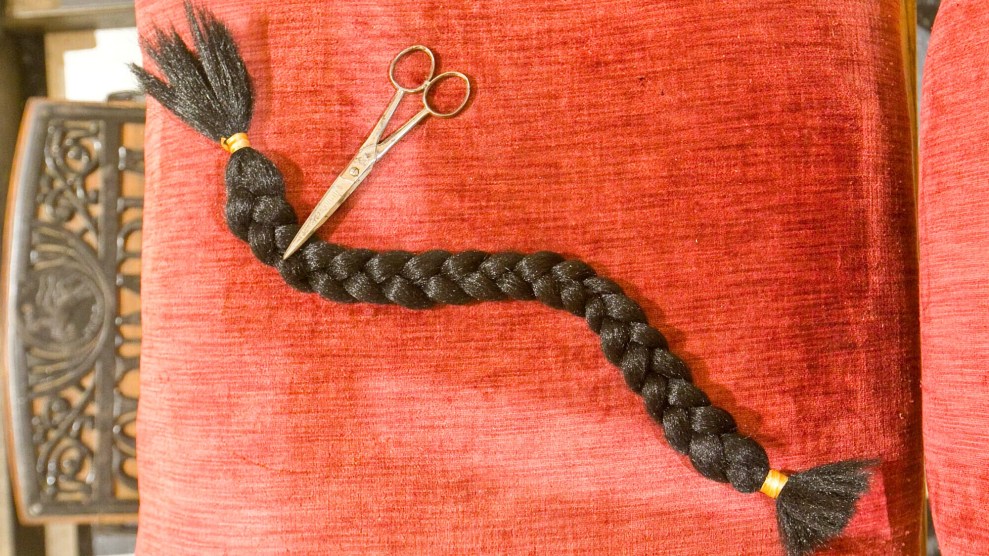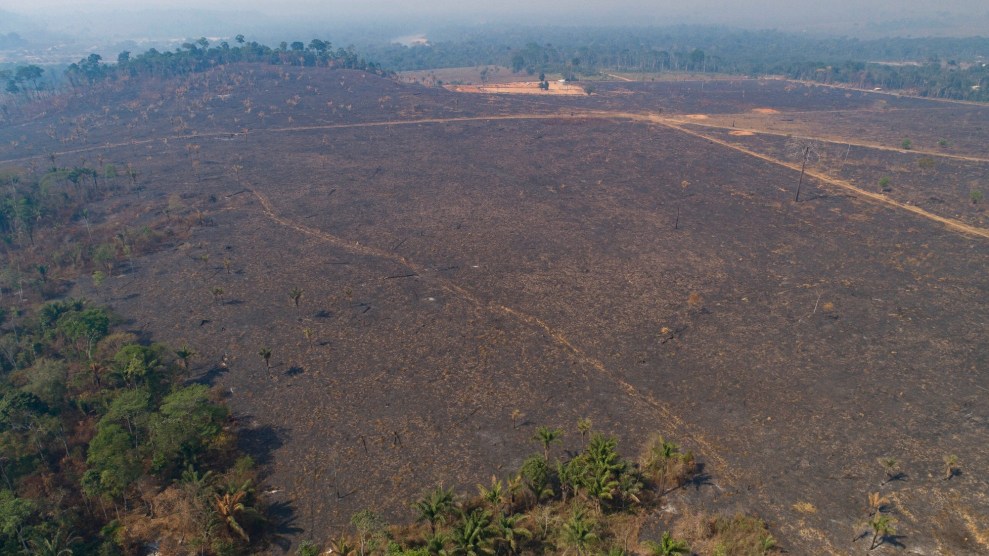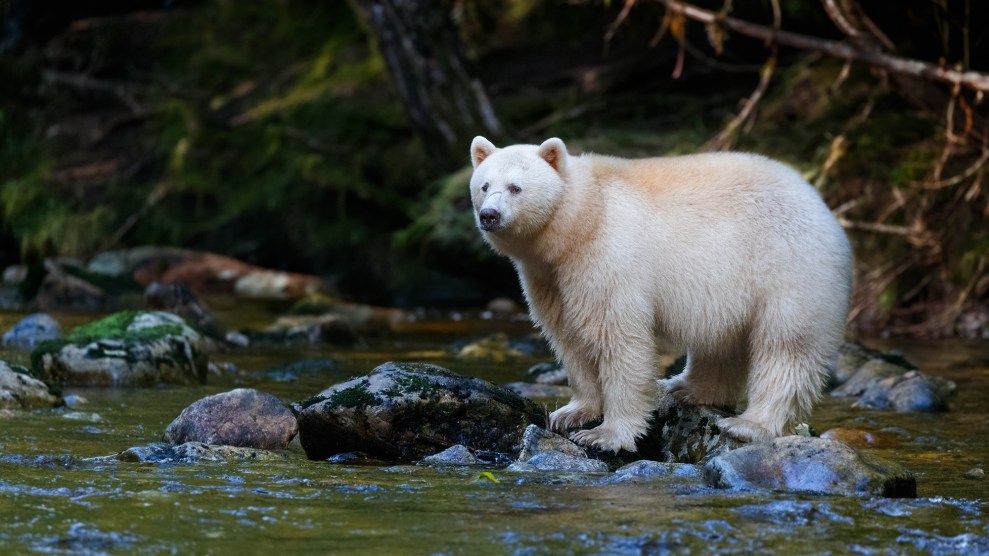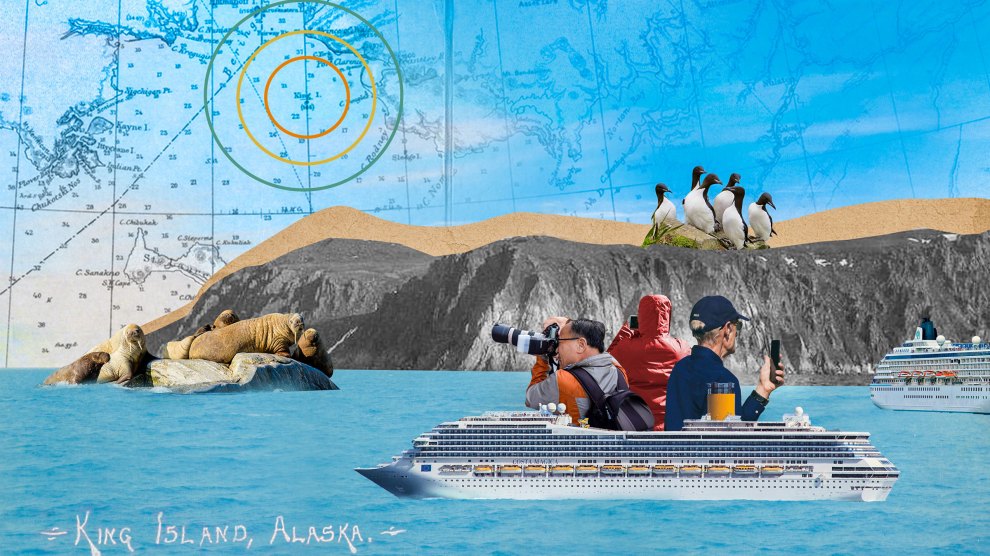
Julia Lubas/High Country News
This story was originally published by High Country News and is reproduced here as part of the Climate Desk collaboration.
King Island, Alaska, roughly 85 miles off the coast of Nome, is home to the now abandoned village of Ukivok. In the early 20th century, nearly 200 people—the Ugiuvangmiut—lived in small houses raised high on stilts above the island’s steep, unforgiving terrain. Historic photos of the village are impressive: Small clapboard buildings are dwarfed by rocky cliffs. But by the 1970s, no one lived here year-round; most residents had moved to Nome, on the mainland. While several forces drove the migration, King Islanders say a main cause was the decision by the Bureau of Indian Affairs to close a school it ran on the island in the late 1950s.
Ben Payenna, a King Island descendant and a King Island Native Community tribal council member, tries to make it out to or near the island each spring. Last year, he fished for halibut nearby. “It’s really special. I mean, I grew up going out there, walrus hunting at a very young age, so I have a lot of memories of pulling up to the island in the fog and seeing numerous boats on the shore ice there and having people already on the island walking down to help greet us and help pull the boats up,” he said. “Just going out there brings back a lot of those memories of elders who are no longer with us.”
Now, a rise in ship traffic in the region may threaten descendants’ connection to King Island. “A lot of us are concerned with people getting on the island and rummaging through our stuff or looking for artifacts, things of that nature,” said Payenna. “Having access from outsiders, not just villages around us, but people who aren’t even in the region, is a little bit worrisome.”
King Island is private property, owned by the King Island Native Corporation. According to the corporation’s president, Mike Thomas, all potential visitors need permission to access the island, though the corporation has little control when it comes to the waters around it.
King Island currently appears on at least one cruise ship’s itinerary. Ponant, a company that sails under the French flag, offers a nearly monthlong trip that departs from Kangerlussuaq, Greenland, travels through the Northwest Passage and terminates in Nome. King Island is among the many places mentioned on a list of the trip’s “Ports of Call and Excursions,” though a statement from a public relations firm that represents Ponant said that passengers will not disembark from the boat at King Island. “Onboard our ship, we offer lectures from our expedition team and naturalists on the history of the island and the tribe who lived there as well as the island’s geology and biodiversity,” it reads. The company declined to answer questions about whether it has consulted with the King Island community about its plans to sail past the island and the information it provides to passengers.
All kinds of boats, from hobby sailboats to large industrial cargo vessels, are visiting the Arctic in greater numbers each year: Between 2013 and 2019, marine traffic in the northernmost seas increased by 44%. Last summer, Nome’s harbor master, Lucas Stotts, braced himself for more than 20 cruise ships — five times the number the community has received in a typical season in the past. “Industry follows the money, and the money is in the Arctic right now in terms of tourism,” Stotts said.
Furthermore, the Arctic could be ice-free in summer by 2050. “There’s a large interest in Arctic tourism (and) cruising the Arctic as it becomes more ice-free, and I don’t see that slowing in any way,” Stotts said. In addition, Russia’s conflict with Ukraine means that ships passing by Nome are staying closer to Alaska than they have before. “From what I understand, they’re more of a catered hands-on expedition,” he said. “You know, you’re loading up in Zodiacs and going face-to-face with wildlife … as well as scenic views, that sort of thing.”
All that marine traffic also raises concerns for the wildlife in the region, including walrus—a main subsistence resource, and one that Ben Payenna relies on. The island serves as one of 62 walrus haul-outs along the Bering Sea coast of Alaska and Russia.
Payenna, who makes the bulk of his income as a commercial fisherman, said that when he’s not fishing commercially, he spends his time subsistence hunting for seals, walrus and a myriad of birds to fill his family’s freezer for the year. “It worries me how much more ship traffic there could be because of the amount of ship traffic that there already is,” he said. “I just don’t want to see anything impact the food chain and disrupt the population of the animals that we have.”
Ponant did not share detailed policies or procedures about how it plans to avoid adverse impacts on wildlife, but its statement said the company adheres to US Fish and Wildlife Service guidelines, which recommend that vessels longer than 100 feet stay at least three nautical miles away from known walrus haul-outs.
In an effort to protect wildlife and Alaska’s small coastal communities, the U.S. Coast Guard approved a 2017 proposal from the King Island Native Community that asked for a shipping route that would take ships away from the island. While the new route is not legally binding, insurance providers monitor the routes ships take to make sure they are in compliance.
The ease with which companies like Ponanat describe getting to King Island concerns people like Qutuq Irelan, also a descendant, who used to visit with his family when he was young. Now a 40-year-old heavy equipment operator in Nome, he said that getting to King Island is not for the faint of heart.
The Bering Sea, known for its rough water, is one of the stormiest places in the world. And once on the island, traveling by foot is arduous. “You ever walked around on a roof?” he said. “There’s all these steep places where you can fall and die…like every 30 feet—Oh, there’s another spot.” Sylvester Ayek, a King Islander who is active in efforts related to Indigenous food security and sovereignty, agreed, writing in an email that slippery algae and big boulders make walking, climbing or scrambling across the island unsafe for anyone who doesn’t know their way around.
Irelan recalls cliff climbing as a kid. One time, he said, vertigo set in and his uncle had to talk him down from his perch. But he also agrees with Payenna and other descendents: It’s a special place. “When you get to the south side of the island and the warm breeze hits your face, it’s like, ‘Welcome home!’”
